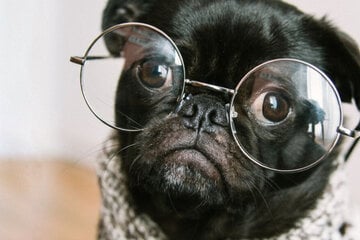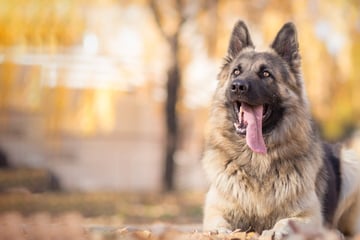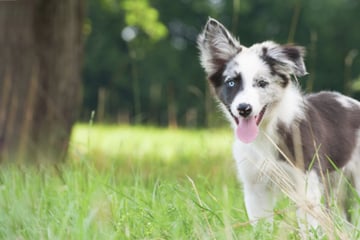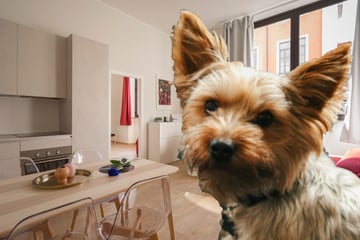Borzoi dog breed temperament, price, and puppies: A guide to Russian wolfhounds
Man's best friend comes in all shapes and sizes, colors and furs, but some are particularly odd – and the borzoi is one of them! This dog breed portrait will take a look at the borzoi's temperament, costs, and what to care requirements.
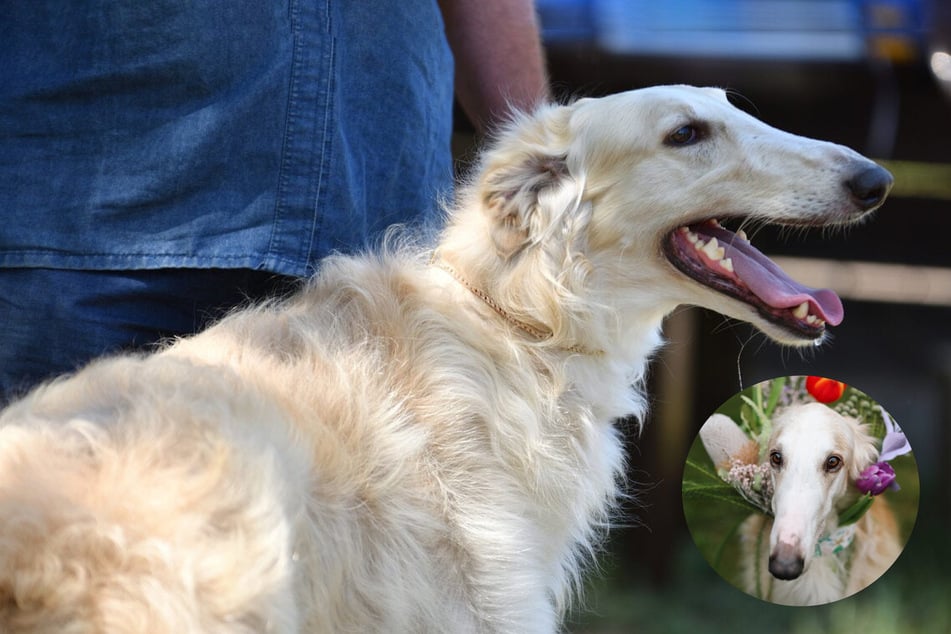
The borzoi takes it popular name, Russian wolfhound, from its place of origin, and it's an incredibly unique and interesting animal.
Used as hunting dogs since sometime between the 13th and 15th century, they were considered Russia's national dog until the early 20th century.
TAG24's dog guide will paint a picture of the borzoi's temperament, price, characteristics, and not least of all, it's unique look.
Have you been thinking about adopting a Russian wolfhound? Here's a definitive guide.
What is the borzoi dog breed?
A borzoi, otherwise knows as a Russian hunting sighthound or just a Russian wolfhound, is a dog breed that was originally bred for the hunting of wolves. They have a long snout that provides them with an incredibly profound sense of smell, and a silky coat that is curly in some and wavy in others.
This is a species of dog that originated in sixteenth-century Russia as a cross between Persian greyhounds and European sighthounds. They have since become an iconic Russian doggo, famous for their beauty and their aristocratic vibes. Indeed, many of the Tsars used to keep borzois in the royal household until the revolution of 1917.
The Russian wolfhound is a gorgeous dog that's still considered rather high-class, even to this day. They are expensive and historically fascinating dogs, worthy of consideration.
Why is the borzoi known as the Russian wolfhound?
As a result of its Russian roots and wolf-hunting origins, the borzoi is known as the Russian wolfhound. Interestingly, the term "Russian wolfhound" became outdated in 1936 and replaced with Russian hunting sighthound. The former term, however, still remains one of the primary names for the borzoi.
What about the term "borzoi", though? Well, the word "Borzói" is an old Russian word that means "fast". As a result, the name Borzoi has been adopted as an anglicized version of what originally meant "fast dog" or "Russian fast dog".
Characteristics of the borzoi dog
The borzoi is a larger dog, with a strong but slender body that has been custom bred for speed, ferocity, and agility. It has an odd shape, though, looking rather elongated, profoundly light, and unbelievably distinctive. Made even more recognizable by their long and narrow heads, tiny ears, and giant almond-shaped eyes, they generally have brown eyes, black noses, and black lips.
These lovely dogs have a relatively long undercarriage, featuring lengthy hair on their ribs, fore and hindquarters, and flanks. Other than that, they keep their coat short, dense, and well groomed. If you own a borzoi and look after it well, it should have a silky, soft and shining coat.
Their coats also take on a variety of different colors, though they don't generally grow chocolate brown or blue. A borzoi's legs and tail take on a different pattern, commonly referred to as "feathering", which generally features a lighter variation on their base color.
Most importantly, though, borzois are famous for looking exceedingly aristocratic, graceful, and elegant. They were, after all, the Tsars dogs, and they certainly look the part!
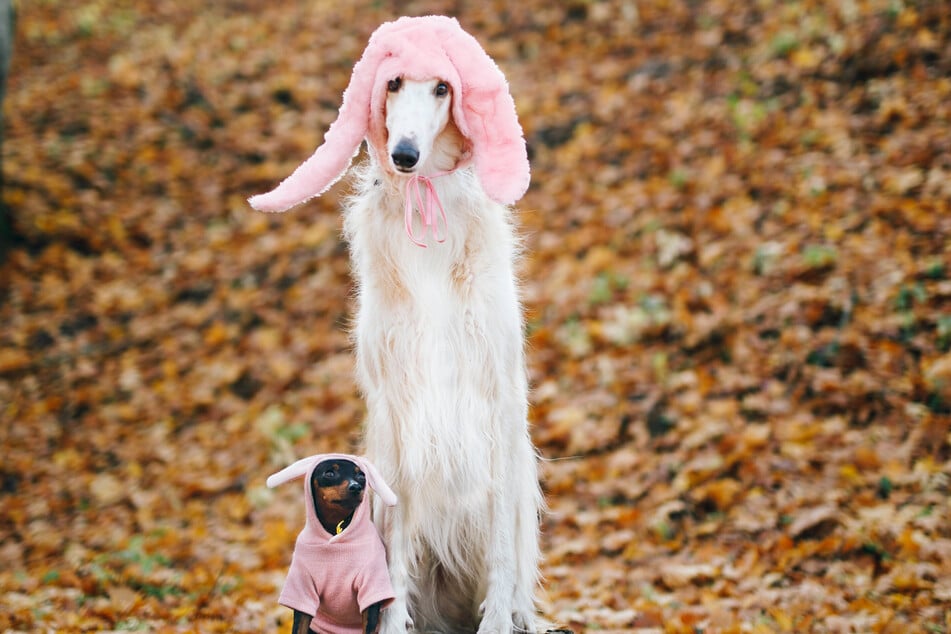
Borzoi temperament
When a Russian wolfhound meets another dog or a stranger, it will become instantly reserved and suspicious. As a puppy, though, they are quite the opposite. This is where that training comes in, as you need to make sure that your beautiful pet remains friendly and loving (if that's what you want).
They give a rather deceptive first impression, though, as while first meetings can be a little awkward, it quickly becomes apparent that borzois are gentle, friendly, and loyal family dogs. If you have a borzoi, you can expect a people-oriented pooch with a high level of sensitivity and a tendency to be clingy, which can get rather overwhelming.
This loyalty will be backed up with an aggression towards potential attackers that can be both an advantage and a worry, depending on the context. They will defend you, but you need to make sure this defense only occurs when warranted, and that your dog doesn't attack some random person.
Borzois are otherwise characterized by calmness, composure, and balance if they are kept sufficiently challenges and occupied. If you make sure that they get the right amount of exercise and education, they will be easily controllable and will be very obedient. At the risk of flogging a dead horse, this again reinforces the importance of proper training.
Borzoi size
Borzois are pretty large doggos, though there are certainly more sizable canine companions out there. Their most iconic feature is, of course, their nose, which is featured in the following section of this article.
Here is some general information on the average borzoi size:
- Height at the withers: Adult females generally stand between 27 and 32 inches tall, while adult males generally stand at 30 to 35 inches.
- Weight: A healthy adult borzoi should weigh between 78 and 100 pounds.
- Life expectancy: This is usually in the 10 to 14 years range.
They're pretty large: Borzois are some of the biggest domestic dogs around, and while high, their bodies are a very odd shape with a rather sunken stomach. Their long and lanky legs make them almost as tall as they are long.
The borzoi's nose is unique
Borzois have an iconic snout, a feature which is quite possibly what visually separates this breed from other similar hunting dogs. Their muzzles are often around 12 inches long, and serve to help the dog breathe. Think about it this way: these dogs were bred to hunt, and hunting requires a lot of exercise.
So, with this in mind, what is incredibly important for an animal bred for speed and movement? Well, the ability to breathe, of course! Borzois have their triangular faces due to being cross-bred with other long-nosed hunting hounds, and this makes them the perfect animal to hunt and kill the likes of wolves and foxes.
What you need to know about borzoi puppies
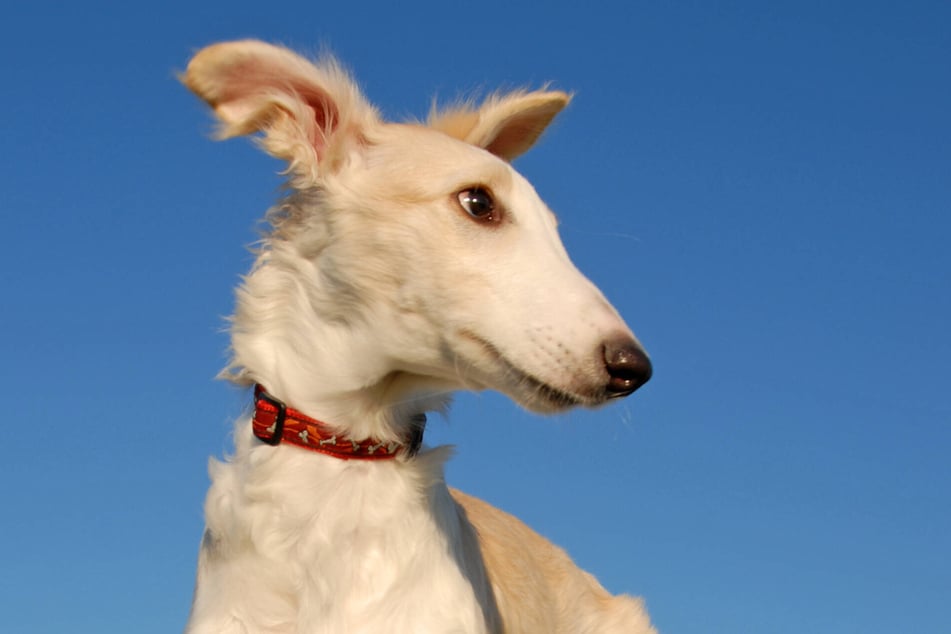
These beautiful hounds are easy to train and incredibly well-behaved, as they have been bred as hunting dogs and therefore need to have these exact traits to be successful in said role. Borzois need to be trained as puppies, though, to make sure that they don't get overly restless, suspicious of others, and unkempt.
As a result, borzoi puppies are friendly and calm things, great for the family and incredibly accommodating even to strangers. Through the process of training, you'll keep these qualities, but also instill a number of values and behaviors that are important for you.
If you want them to bark at intruders, you can get them to do that; if you want them to hunt, then they will hunt. It is all about training, and that training is best implemented while your beloved doggo is a calm, loving, and gorgeous little puppy – youngsters have longer to learn, and are more easily coached into adopting certain traits.
Russian borzoi price
Pure Russian borzois are expensive fellows to adopt, if you get them from a breeder. The going price is a minimum of $2000 to adopt, with expenses for food, veterinarian care, vaccination, de-sexing, insurance, and training not included. As a result, only those who have a solid income and will be able to handle those costs should adopt a Russian wolfhound.
It is important to go with a reputable breeder who has a proven and demonstrable track record in the field, to make sure that you are getting a genetically sound dog that won't be at risk of breeding-related health issues. Speak with a veterinarian to get recommendations.
Advice for Russian wolfhound owners
All prospective borzoi owners should think very carefully before adopting these beautiful beasts. They are very time intensive, and busy bees that don't gel well with people who cannot devote large amounts of time to their care.
Here are some tips for Russian wolfhound owners:
- Only adopt a borzoi if you have plenty of time to spend with it, can go on lots of walks, and have the money to pay for advanced and high-quality training.
- Make sure that you get your borzoi agility training, to keep it fit and healthy, and also to give it a chance to expel energy.
- Allow your dog to be nearby whenever you are at home, to make sure that they feel close to you and not left out.
- Your dog needs to be given plenty of veterinarian care. Take it to the vet as regularly as possible for check-ups, so that it doesn't get sick.
- Use the opportunity when at the vet to get a specialized diet designed for your borzoi, giving it the energy and strength that it needs.
- Borzois are susceptible to digestive issues, so they should never be fed before exercise, and keenly looked after.
- They should have their coat properly maintained by a dog groomer.
Don't adopt a borzoi if you don't have the resources. It's quite simply, really: you will be stressed out of your mind, and your dog won't be happy.
The borzoi dog has taken the identity of an arts and internet star
As dogs that have become commonly associated with aristocracy and Russian society, the borzoi has become a symbol for richness and a very popular artistic motif. Sculptures featuring the borzoi, and Tolstoy's Russian wolfhound Milka from his seminal novel War and Peace are just two examples.
Even nowadays, the borzoi has become somewhat of an internet sensation. We're not surprised, to be honest, as they do look rather odd. These proud canines are worth your attention, though, even if they can be a handful.
Cover photo: 123 / Vladimirgalkin & Karolina Wv / Unsplash (TAG24 Edit)

